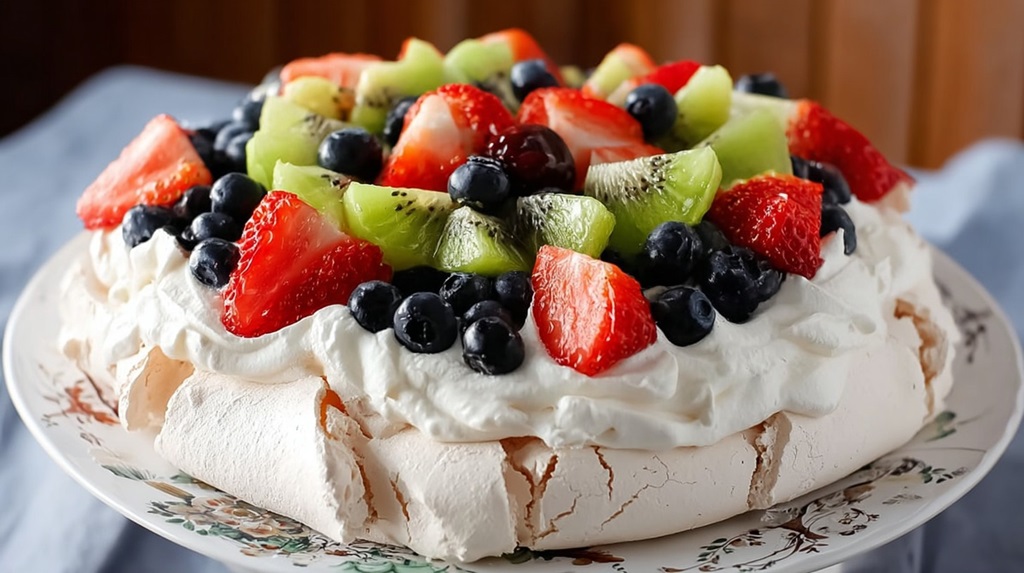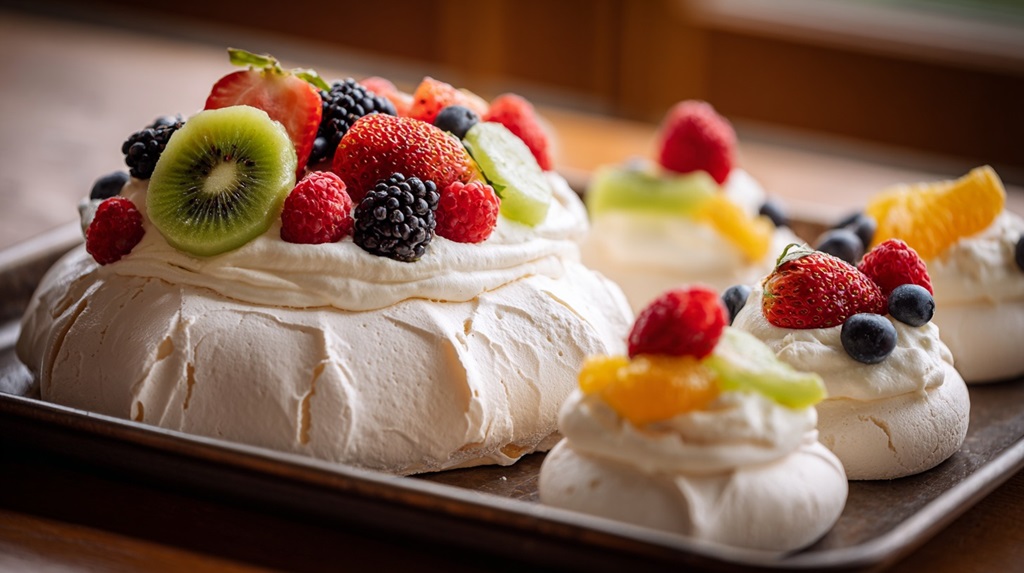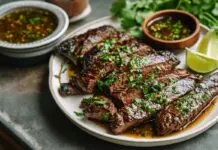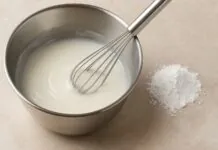
A bite of pavlova at a sunny Australian barbecue lingers in memory like a snapshot of joy.
Crisp on the outside, chewy inside, and crowned with fruit, that first taste created a lasting impression.
During a trip to Australia, the discovery of pavlova felt both surprising and delightful, transforming a casual dessert into something unforgettable.
Pavlova cookies are a way to reimagine that moment in a form ideal for gatherings.
These small treats capture the crisp shell, marshmallow-like center, and refreshing toppings in a handheld size perfect for sharing.
The Origins of Pavlova
Pavlova carries with it a story of cultural pride and friendly rivalry. Australia and New Zealand each claim the creation of this dessert, a debate that has continued for decades.
Its name honors Russian ballerina Anna Pavlova, whose elegance inspired a dish meant to feel airy and graceful.
In Australia, pavlova has become a staple on tables during summer barbecues, Christmas feasts, and family celebrations.
Part of its charm lies in its adaptability, often finished with a crown of whipped cream and fruits such as:
- Strawberries
- Kiwi
- Passionfruit
No festive season feels complete without this airy dessert offering both lightness and indulgence in every bite.
Why Mini Pavlovas?
Mini pavlovas, styled as cookies, bring both practicality and playfulness to the table.
Large pavlovas, while beautiful, often create challenges when it comes to slicing and serving.
Portions can crumble or collapse, and plating them neatly becomes a test of patience.
Small, cookie-sized pavlovas eliminate those issues, making them a clever solution for hosts who want desserts that look as good as they taste.
The transformation does not take away from the essence of the dessert.
Each cookie still carries the classic contrast: a crisp exterior that gives way to a marshmallow-like interior. Mini pavlovas also shine when it comes to storage and transport.
They can be stacked carefully in containers, stored in airtight tins, and even made ahead of time for convenience.
They also allow more creativity in decoration since each cookie can showcase different toppings and flavor combinations.
To highlight the advantages, here are key benefits of choosing mini pavlovas:
- Easy to serve at parties without messy slicing.
- Individual portions make guests feel treated to something personal.
- Easier to transport and store compared to one large pavlova.
- Ideal for experimenting with multiple topping variations.
- Retains the texture balance of crunchy shell and chewy center.
- Perfect way to bring a personal travel memory into daily baking.
Ingredients That Matter
The success of pavlova cookies begins with ingredients chosen with care. Meringue bases are simple but highly sensitive, meaning each component matters.
Room-temperature egg whites create the right volume during whipping. Caster sugar, being finer than granulated sugar, dissolves smoothly into the mixture and prevents a grainy finish.
Cornstarch ensures a chewy center, while a small addition of acid like lemon juice or vinegar stabilizes the egg whites during baking.
Flavor enhancements such as vanilla or citrus zest provide subtle character.
Toppings bring color, flavor, and freshness. While whipped cream remains the traditional choice, dairy-free alternatives can work just as well.
For those in Melbourne looking for quick and reliable access to cream chargers or dispensers. You can find same-hour delivery for all your whipped cream needs in places like https://www.nangwizard.net.
Fruits transform the dessert into something vibrant and seasonal.
To illustrate, here are topping ideas that elevate presentation:
- Classic choices: strawberries, raspberries, blueberries.
- Tropical flavors: mango, kiwi, passionfruit.
- Festive garnishes: lemon curd, pomegranate seeds, edible flowers.
- Creative twists: chocolate drizzle, caramel swirls, candied herbs.
Every element plays its role in achieving harmony-light cream, sweet-tart fruit, and crunchy-chewy meringue working together in perfect balance.
Technique
Creating pavlova cookies requires patience, precision, and respect for the science of meringue.
Egg whites must be handled carefully, whipped at a slow speed initially, then increased gradually until glossy peaks hold firm.
Sugar should be added slowly, one spoonful at a time, allowing crystals to dissolve fully without deflating the mixture.
Once the meringue is ready, shaping becomes the fun part. Using a star tip, pipe uniform circles about three inches wide onto lined baking sheets.
Flatten the tops slightly so toppings can rest securely once baked.
Baking is a slow process at a low temperature, around 225°F, lasting about 70 to 75 minutes. This gentle heat ensures the outside becomes crisp without burning, while the inside retains a soft, chewy center.
After baking, patience remains crucial. Turning off the oven and letting the cookies rest inside for about half an hour prevents sudden changes in temperature that could cause collapse. For a quick overview, here are steps to remember:
Whip egg whites slowly, then increase speed to glossy peaks.
- Add sugar gradually to avoid graininess.
- Pipe 3-inch circles with flattened tops.
- Bake low and slow: 225°F for 70–75 minutes.
- Leave cookies in oven after baking to set properly.
Assembly & Presentation
Decorating pavlova cookies is a final step that should always wait until just before serving. Crisp meringue shells can soften quickly when topped with cream or juicy fruit.
Keeping them bare until the last moment ensures the right texture when presented to guests.
Choices for toppings vary depending on mood, season, and occasion. Classic combinations never disappoint, yet more adventurous pairings can bring a refreshing twist.
To showcase different serving styles, here are some flavor pairings worth trying:
Arranged on a tray, pavlova cookies look like edible jewels, each one a small canvas of color, flavor, and texture. Guests are invited to enjoy them not just as desserts but as moments of celebration.
The Bottom Line
Pavlova cookies bring together technique, flavor, and joy in a delightful format.
Crisp, chewy, and crowned with fruit, they offer both elegance and accessibility.
Anyone looking to recreate a memory or share something delightful with others will find it rewarding to bake.
Also Read: How to Make Icing with Powdered Sugar




















